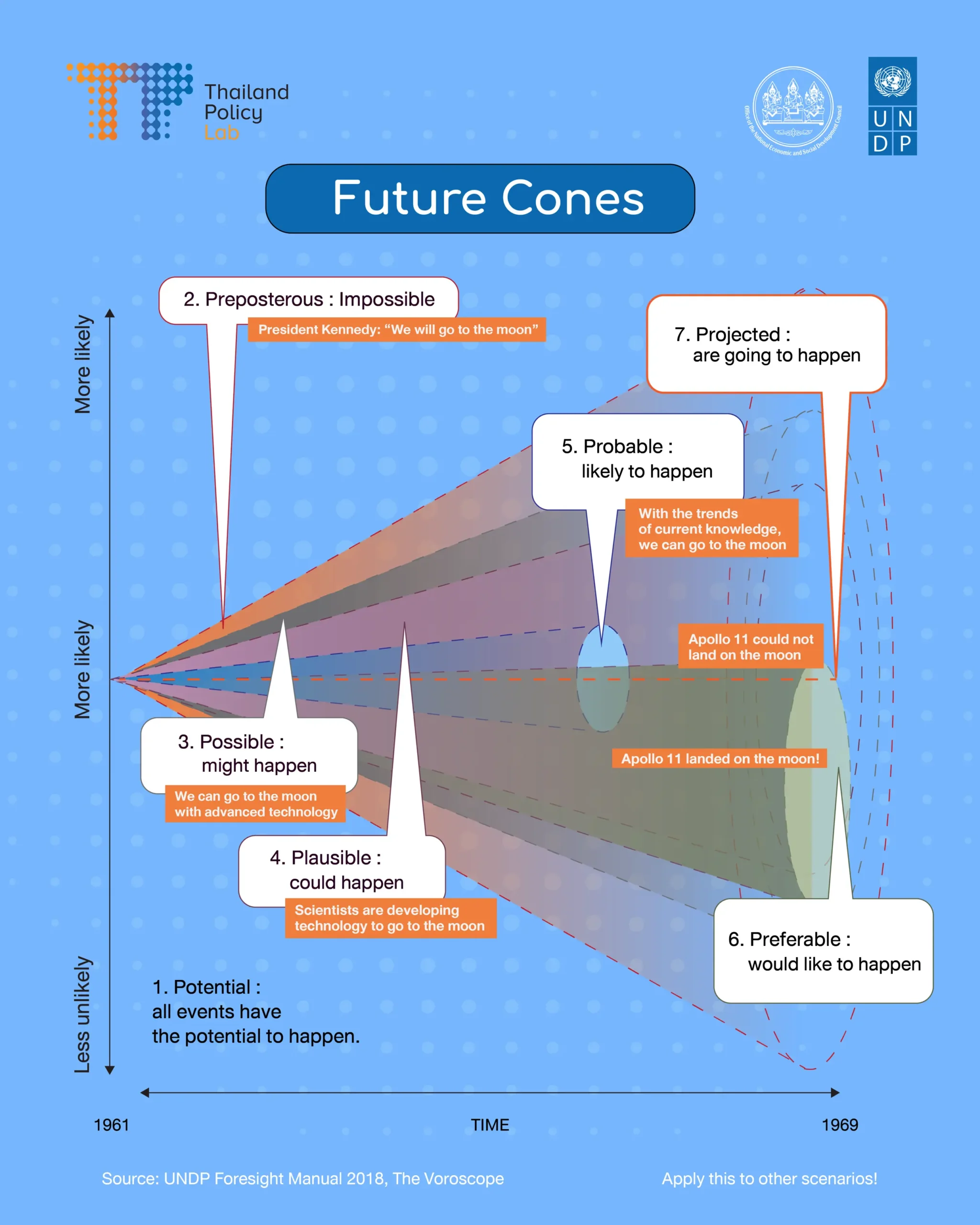In strategic foresight, data has to be analysed before we begin strategising. We often understand that we can forecast the future only with present trends – but this line of thought does not afford us diverse future scenarios.
Joseph Voros, an expert in strategic foresight, developed the Future Cones to forecast various future scenarios and to help policymakers categorise those scenarios for a better strategic foresight.
Voros suggests an analogy of seeing things through a car’s headlights where we see what is right in front of us better than where the lights don’t quite reach. But that doesn’t mean there is nothing beyond where the lights shine through. This applies to the future. We see imminent occurrences clearer than those far removed – but this doesn’t mean they cannot happen. Voros categorises the future into the following:
1. Potential – Everything, every occurrence beyond the here and now, even those that seem impossible
2. Preposterous – Scenarios that are beyond our imagination
3. Possible – Scenarios that might happen in case we have future knowledge
4. Plausible – Scenarios that, with our current knowledge, could happen
5. Probable – Scenarios that, considering the current trends, are likely to happen
6. Preferable – Scenarios that we would like to happen, depending on our value judgements
7. Projected – Scenarios that are going to happen or must happen
When using this tool, time is a variable. Think about how Apollo 11’s trip to the moon seemed preposterous at the time, but it happened nonetheless in 1969 after technology became more advanced. Possibility depends on time – when deciding what is likely to happen, time is an important factor.
For those who would like to use the Future Cones, you can start by brainstorming the signals and drivers, categorise them into future scenarios, and prioritise those scenarios from highest to lowest possibility. Facilitators can also add the wildcards to factor in an unlikely occurrence that might impact the future. The wildcards can include “the new pandemic” that affects future society and daily life like the COVID-19 or “the US to move production base to x” that may not affect your future scenarios. This can help you imagine the future scenarios you have not thought of, including the unexpected but relevant factors.
After you’ve got your Future Cones, you can further analyse which scenarios you would like to happen and how you can make that happen. This is all to improve your strategic foresight.
Source : UNDP Foresight Manual 2018

